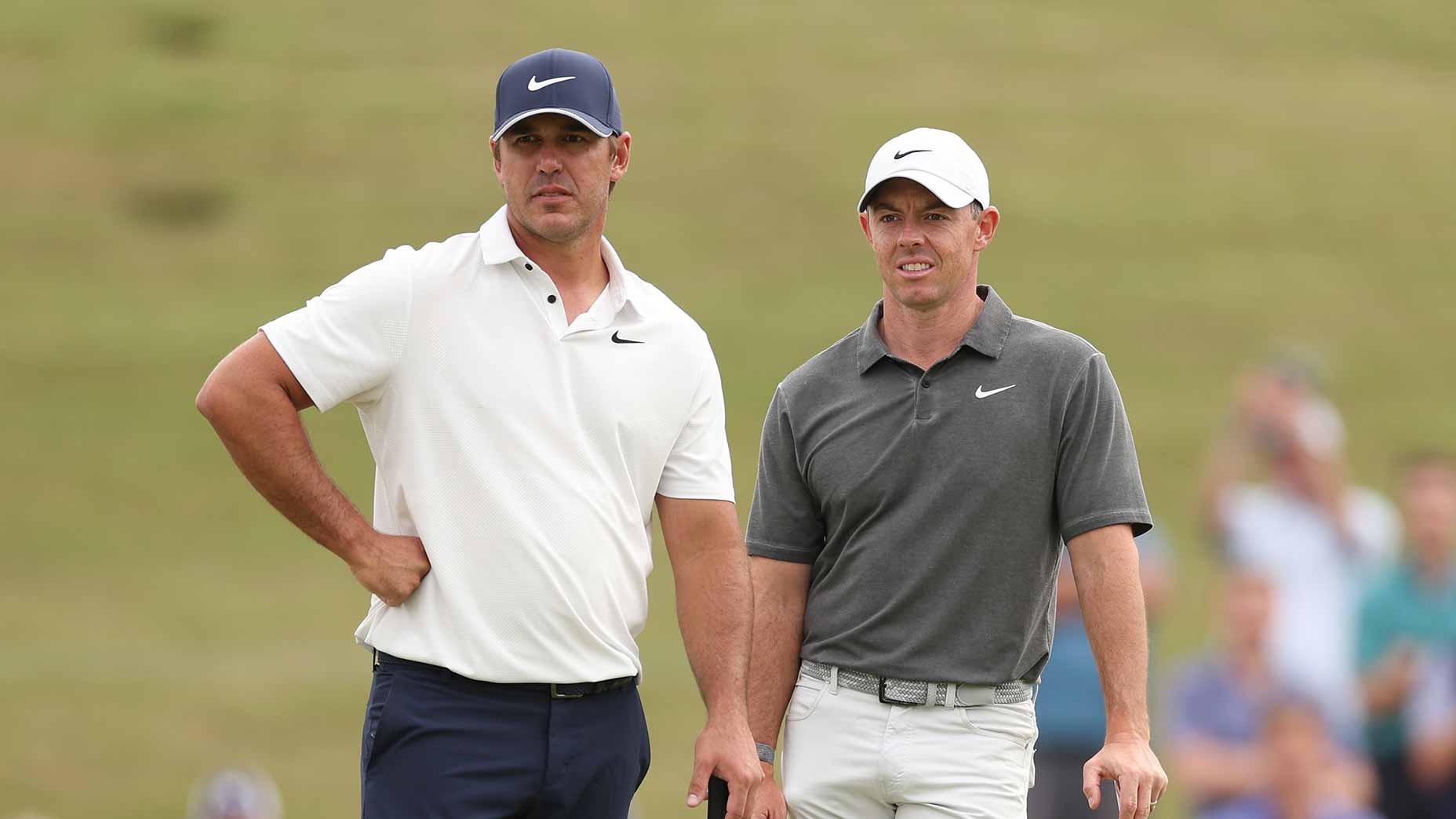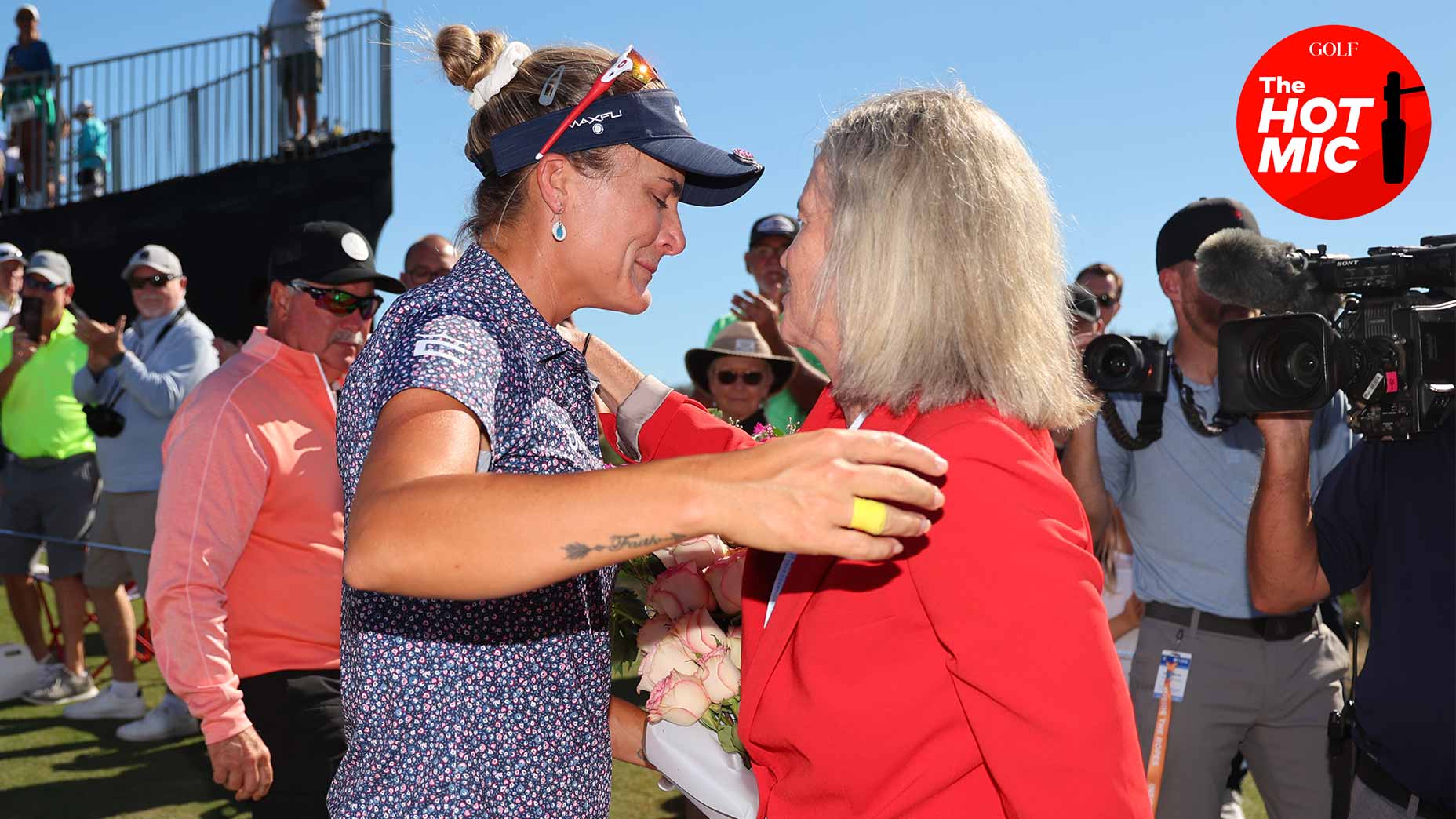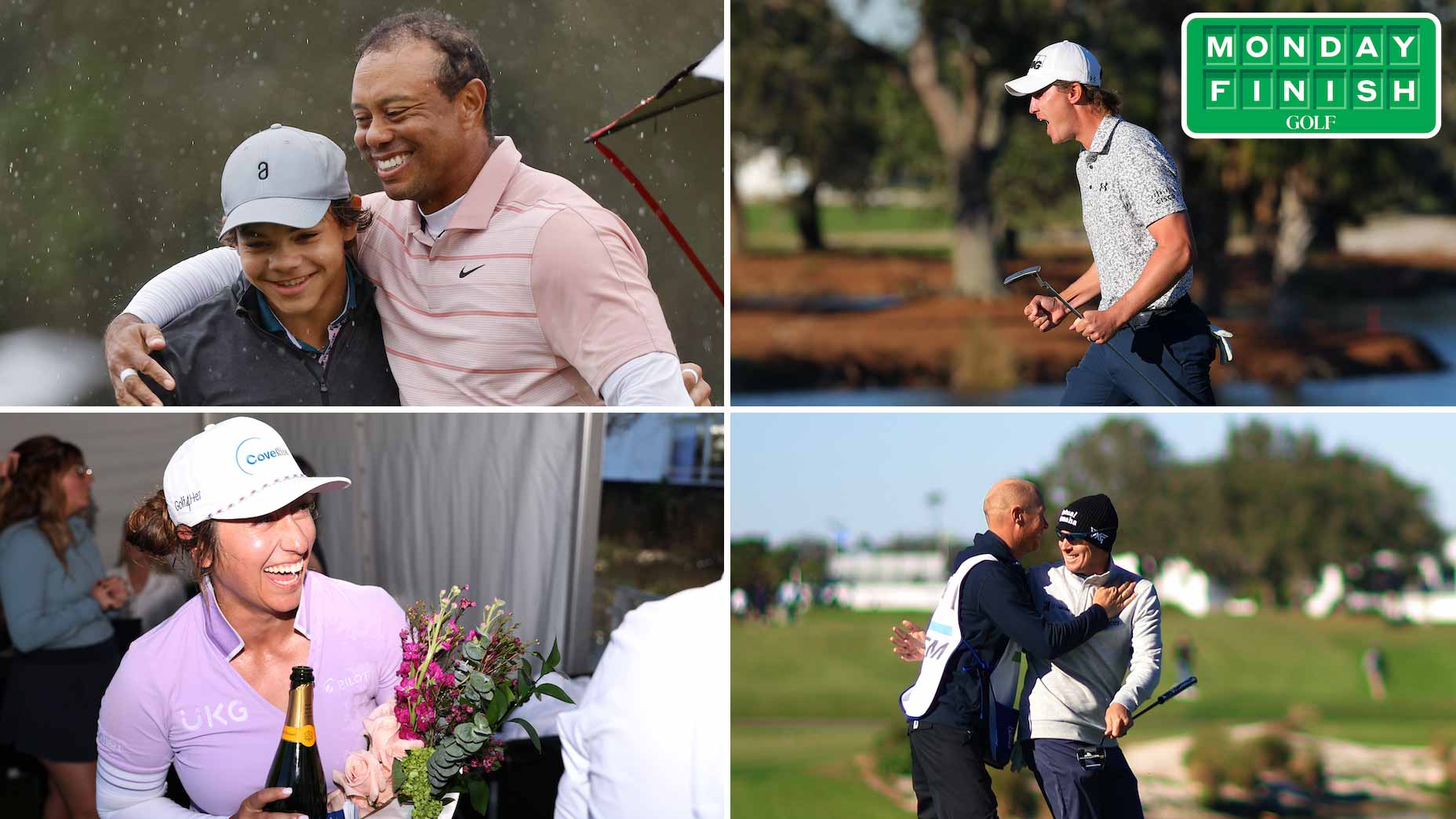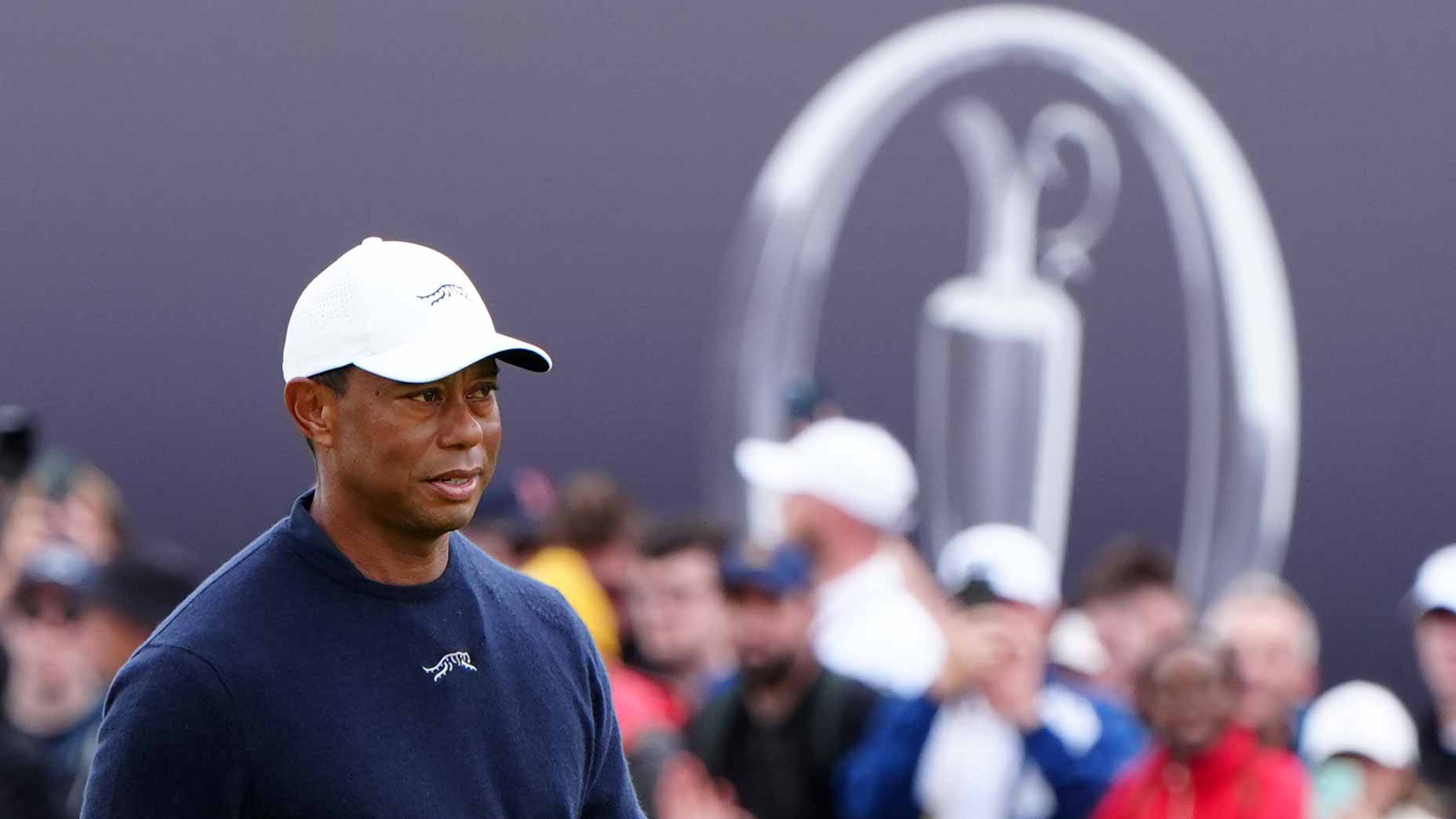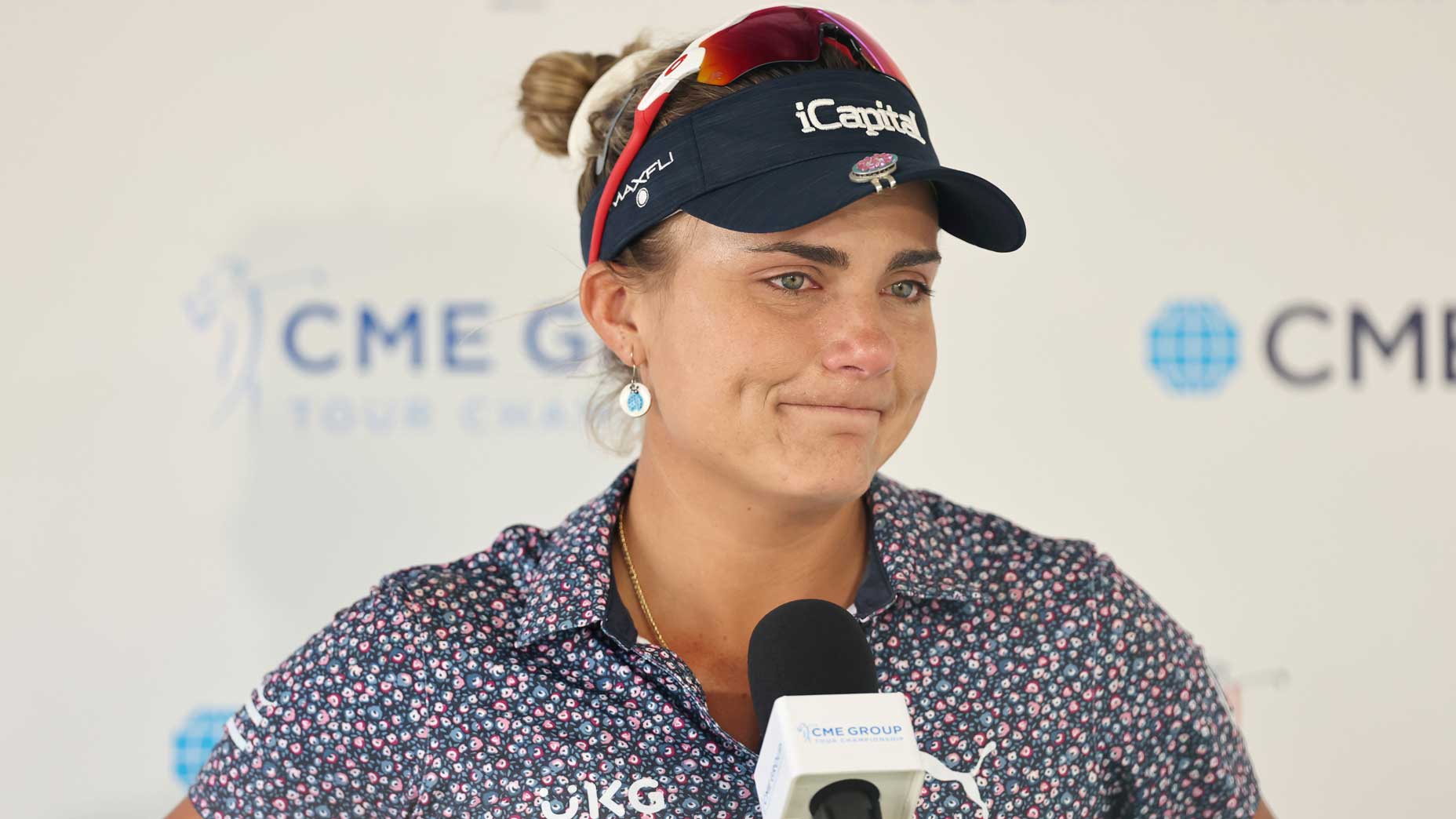At first he thought they were under attack. Two years earlier, terrorists had bombed a resort in Bali, and now, on Ko Phi Phi Don—an island off the coast near Phuket, Thailand—Will Robins feared it had happened again. People raced through the hotel lobby. The air filled with panic.
Robins, an aspiring 26-year-old Tour pro on his honeymoon, grabbed his bride, Amanda, 27, by the hand, and they jumped over the front desk and hid in an office crowded with metal shelves.
“It was absolute mayhem,” Robins says. “We’re inside the hotel, and people are running for their lives. Next thing you know, it’s like the loudest explosion you’ve ever heard, but it never stops. It’s a boom that just keeps going.” About 250 miles away, in Indonesia, a 9.3 magnitude earthquake had triggered a tsunami. Now, a wave two stories high was slamming into Ko Phi Phi Don.
“The ground starts to shake, violently,” Robins continues. “Amanda and I are on our knees, we’re holding each other, and I’m yelling at the top of my lungs, ‘I love you!’ And she shouts, ‘This is it, isn’t it?’ And that second, the room just implodes around us. A chunk of cement wall cracks me on the head. I can feel my skull, like, liquefy. Amanda is shot through the ceiling by the force of the water. I had her hand, and one second later, she’s just gone. I still don’t know what’s happening—it’s fear, panic, sorrow—every emotion you can imagine. So I start talking to myself: ‘This is not how Will Robins dies. This is not how I die.’ But I’m under water inside a room that’s tumbling over and over again, and if you could imagine 50 people with baseball bats cracking you over and over, that’s what it feels like. And very quickly I go from, ‘This is not how I die’ to ‘F—, this is how I die.’ It’s the emptiest feeling. Not fear, just sadness. I know it’s all over. I remember thinking, You’ve lost your wife, you’re not going to make it through this. Just inhale the water.”

Will Robins has led a charmed life. Growing up in Warwick, England, he was a gregarious kid entranced by golf. His family had friends on the Monterey Peninsula, so when he was 16 he came over for the summer, and, typical of his luck, his hosts’ connections helped get him onto many of the area’s famous tracks. He talked his way onto the golf team at Monterey Peninsula College and into a caddie gig at Cypress Point, where he found himself in high demand.
Robins met Amanda through mutual friends. They saw each other off and on for 18 months, until he proposed in December 2003. Says Robins, now 35, “I had no ring, no flowers, we’re in a muddy field in England, I get down on one knee…”
“I had Amanda by the hand,” Robins says, “and one second later, she’s gone. Just gone.”
“It was very romantic,” says Amanda, 36, rolling her eyes.
They were married in the summer of 2004, but they delayed their honeymoon until December. “We were waiting for the good weather,” Will says ruefully. The couple arrived with no hotel reservations and just winged it. They fell in love with Thailand, and toward the end of their three-week trip they discovered Ko Phi Phi Don. On the morning of December 26 they had a tough decision to make: Should they have cocktails on the beach, or rent a boat and explore the rest of the island?
It all changed in an instant.
“I’m a person of faith,” Robins says of the tsunami’s initial wave, which stole away his wife and held him trapped under the water amid the hotel wreckage. “And I believe that God gave me the resolve to keep fighting. I mean, I’m not going to inhale the water. My lungs might explode, but I won’t breathe the water in. And the second I make that decision, bang! I get spit to the surface. I’m in the middle of the ocean, under bright blue skies. I look around, and my wife is right there. I literally just reach over and grab her arm, and that’s when she starts crying and screaming: ‘I’m broken, I’m broken, I’m broken.’ “

Of the 10,000 people on Ko Phi Phi Don, more than a third perished in the tsunami. Across fourteen Indian Ocean nations, the death toll is estimated at 283,000. Will and Amanda had survived the killer first wave, but their ordeal was just beginning. He had sustained a concussion and a broken clavicle; his right ear was hanging from his head. Dozens of puncture wounds covered his body.
Amanda was cut up and her pelvis was shattered—she couldn’t move her legs. As they bobbed in the water, clinging to a kickboard that had providentially floated by, they felt the force of another wave gathering. “There’s no way we’re surviving this one,” Will says. “Our bodies are trashed, we have no strength left to fight, and the water is full of wreckage. Surely we’re going to get crushed and pulled under in the next wave.”
The boat materialized seemingly out of the salt air—small, wooden and piloted by a Swede named Marcus Mellberg, who was looking for his parents and siblings. Will and Amanda begged for help; Mellberg said he had to save his family. “Looking back,” Will says, “it was the harshest thing I could have ever asked of any human being, and it’s the greatest miracle I’ve ever witnessed. I said, ‘You can’t help your family—we’re going to die here in front of you, you have to save us.’ But I said it in a voice of shrieking death, and he gave up his family and he basically said, ‘Okay, I’m going to go for it and help you guys.’ I didn’t know it then, but nine years later, Marcus would become the godfather to my daughter.” (Mellberg eventually found his family members, injured but alive.)
Will’s lingering injuries ended his playing dreams. “I’d get in the shower and just cry from the pain.”
Will and Amanda were shuttled from the boat to a barge, then a dive boat and finally a fishing trawler, each packed with the injured. It took 12 hours to reach the overwhelmed little hospital in Phuket. A photo of their bloodied arrival at the hospital ran in the Times of London; Will’s brother James spotted the picture, the first sign that Will and Amanda were alive. Her parents arranged a medical evacuation to a hospital in Bangkok, where for the first time in three days they received pain meds stronger than ibuprofen.
They spent six weeks in the hospital undergoing various surgeries. Kids from Amanda’s school sent a thousand origami cranes, evoking a symbol of health and happiness in many Asian cultures. Counseling for post-traumatic stress would come later. Amanda is still wary of the ocean and reluctant to discuss what she calls “the accident.”
“I’m not sure we’ll ever understand why we were spared when so many others died,” she says. “I do believe everything happens for a reason. Maybe [daughter] Madeline is destined to do amazing things. Maybe through my teaching I can reach one child who otherwise would have lost their way. Maybe it’s so Will can bring joy to so many through golf. It’s possible we’ll never know the answers. Surviving gave our lives a sense of purpose.”
After the tsunami the couple returned to their home outside Sacramento. Will was intent on resuming his playing career, even though every swing caused shooting pain in his neck. To make ends meet he took a teaching position at Empire Ranch Golf Course in Folsom, California, where he began to question traditional teaching methods.

“You’ve got a 29-handicapper who can’t touch his toes,” Robins says, “and he’s made to stand at the range for an hour working on swing positions and being told to stay on plane. Even if he knows what that means, his body won’t let him do it. It’s a waste of time. To me, being a coach means finding what each player has inside and bringing it forward, not dictating a swing method that they have to conform to.”
Robins favored nine-hole playing lessons over range sessions. He kept swing instruction simple, emphasizing the art and craft of thinking your way around the course. “I was just teaching the way I knew how to play, which is to get the ball on the ground, get it running, pick a club that you can miss with, play for your miss, avoid trouble—just basic scoring stuff I learned growing up in England. Well, I had students going from shooting 100 to 85 in six weeks, and everyone is like, ‘Oh, my God, this is the most amazing stuff ever.’ And I was boggled—it was just basic golf to me.”
Robins developed a following as an instructor, but he still yearned to play. A group of Cypress members gave him financial backing, and in February 2006 he teed it up at Canadian Tour Q-School. He still felt the effects of his injuries. “Every morning I got in the shower and just cried because of the pain,” he says. “But I was like, ‘You’re alive, so shut up and keep playing.’ ” He missed getting his card by two strokes. He finally let go of his dream to play the PGA Tour and fully committed himself to teaching. “It was a dark time,” he says. “I thought I knew God’s plan for me, but I was wrong. What saved me was the enthusiasm of the players I was working with.”
Says one student, “There’s something spiritual about the way Will teaches.”
Robins ministers to 300 students out of Empire Ranch and nearby Turkey Creek Golf Course, and he runs a thriving First Tee affiliate. He focuses on “the scoring zone” of 100 yards and in. Robins has a special affection for high-handicappers. A recent playing lesson was with Sandy Emmy, a spry octogenarian who plays to a 30 and says he has only one goal: “To hit it longer.”
On the range, Robins gives Emmy some simple swing thoughts, and the student begins crunching 150-yard drives. Emmy shoots 54 for nine holes, a typical score for him. Robins maintains a patter of encouragement and keeps his own brand of stats. He gives a player like Emmy a “par” for how many strokes it should take him to reach the 100-yards-and-in scoring zone—generally, two for a par 4 and three for a par 5. The goal is to get down from there in no more than three strokes.
“If a golfer can do that, he’ll shoot in the 90s and probably the 80s,” says Robins. In the parking lot, Robins walks Emmy through his round: “Sandy, my boy, you hit the ball beautifully. On eight of nine holes you reached the scoring zone in regulation. The long game isn’t your issue. But look how many strokes it took you to get down from there: four, five, five, four.” On the spot, Emmy signs up for a 10-lesson package, half of which are nine-hole rounds focusing on strategy. If Emmy isn’t shooting in the low 90s at the end of their 10 sessions, Robins will keep teaching him for free, a deal he makes with all of his students.
“People always say they want to hit the ball farther or consistently,” Robins says, “but really they want to shoot lower scores. They just don’t know how to. The feeling of a great shot is gone as soon as you duff the next one. But when you take 10 strokes off your score, that excitement lasts.”

He has founded Will Robins Golf, certifying other instructors in his methodology and licensing proprietary software that includes drills, videos, stats and tools for managing the business. A half-dozen of his protégés haunt various courses in the Western U.S. Among the believers is mini-tour player Isaac “Sasquatch” Sanchez, a popular competitor on The Big Break. “Will changed my life,” Sanchez says. “For 10 years people told me how to swing, and I was miserable. The funny thing about having Will as a coach is we never talk about my swing. Half of our ‘lessons’ are at Starbucks. He just wants to know what I’m thinking on the course. There’s something spiritual about the way he teaches. When I talk to him, I feel more peaceful about golf, and about life.”
Robins radiates contentment because he has made peace with the wave that took away his dreams. “It’s a great life,” he says. “It’s not anything I could have ever foreseen—it’s better.
“Everyone has a tsunami in their life. Maybe it’s cancer, or a bankruptcy, or the death of a loved one. But there will always be a storm. The question is how you deal with it.”
This article was originally published in the August 2014 issue of Golf Magazine.



